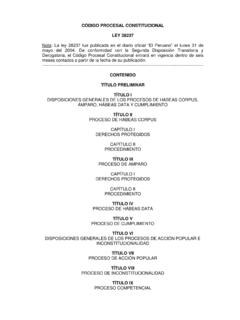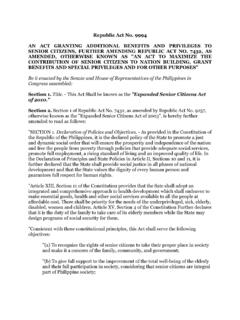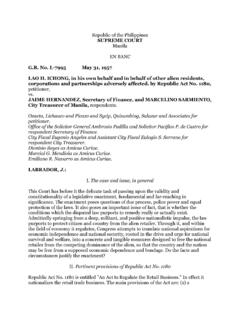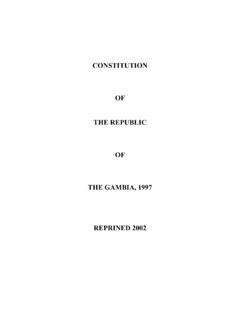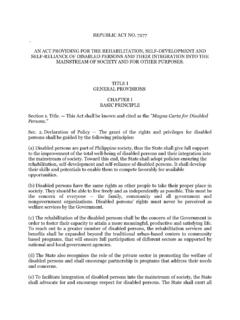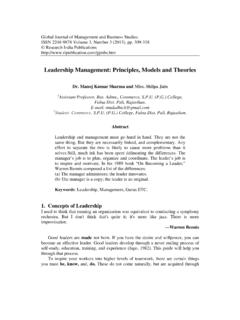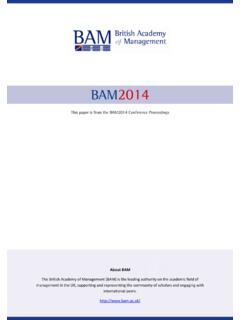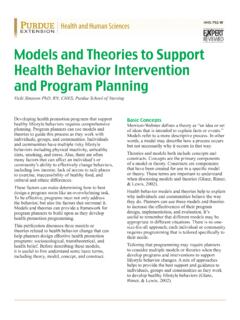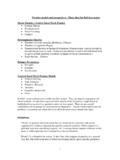Transcription of Causes and Theories of Domestic Violence
1 Causes and Theories of Domestic ViolenceRunning Time:2 hoursMaterials:Flipchart with stand and markers, or chalkboard with chalk; an ample supply of large index cards; : Power and Control Wheel; Declaration on the Elimination of Violence Against Women; Handout: Causes ofDomestic ViolenceTarget Audience:Can be used for awareness-raising with various audiences or participants. This session is designed to increase participants knowledge about the Causes of Domestic Violence , the ways in which beliefs about Causes affect the community s response to the abuse, and the importance of sharing a common understanding of these issues. This session assumes that participants are either already familiar with, or have attended the training session on the definition of Domestic Violence . In addition, the final activity of this session assumes that participants will have a general understanding of gender-based Violence .
2 This session could be used effectively in conjunction with the session on myths and realities about Domestic :To be effective, intervention strategies for Domestic Violence must be based on a clearly articulated theory about the cause of Domestic Violence . The theory of Violence on which we rely will dictate our response to the problem. To the extent possible, all parts of the community must share the same understanding of Violence to effectively coordinate their responses to the problem. If community members understand Violence differently, their responses may be inconsistent and even harmful to regarding the evolution of Theories of Violence in the United States is useful because various forms of these Theories are being discussed in many countries in Central and Eastern Europe and the Commonwealth of Independent States.
3 In the United States, the reliance on some of these Theories has led to responses that were ineffective, or have even endangered women s safety. Understanding the evolution and shortcomings of these Theories can help ensure a response that furthers victim safety and batterer accountability. During this session, we will examine various Theories about the Causes of Domestic Objectives:Facilitator:At the end of this session, participants will be able to:-Identify and evaluate different Theories of Domestic how the theory of Violence used dictates the response to Domestic Domestic Violence as intentional, learned behavior designed to achieve power and control over the relationship between women s subordinate role in society and Domestic 1: Theories of Domestic leads a brainstorming session about common explanations of the cause of Domestic Violence .
4 Facilitator asks each of the participants to share their ideas randomly or in turn. The ideasare not criticized or discussed; participants may build on ideas voiced by others. The questions for brainstorming are: What common explanations have you heard about why Domestic Violence occurs? What explanations can you imagine people might give for why Domestic Violence occurs? Write down each answer as they are offered on a flipchart or chalkboard without any comments, notes or questions for 5-7 minutes. After discussing the ideas, post the list on the wall or leave the list on the chalkboard so it is visible throughout the training summarizes the results of the brainstorming and then concludes by highlighting the following concepts in a mini-lecture format: The first theory that developed in the United States was that men who battered women were mentally ill.
5 At this point, the facilitator should ask participants the following question: What conclusion or response naturally follows from the belief that batterers are mentally ill? Answer: Treat the mental illness through medication or therapy. The theory that batterers were mentally ill proved to be wrong. The number of relationships thatinvolved Violence was much greater than original theorists guessed and psychological tests did not support the theory that Violence was caused by mental illness. In fact, many batterers and their victims tested normal under psychological tests. In addition, the behavior of perpetratorsof Domestic Violence did not correspond to profiles of individuals who were mentally ill. Batterers attack only their intimate partners. People who suffer from mental illnesses such as schizophrenia do not limit their Violence to their intimate partners.
6 The next theory described Violence as a loss of control. For example, many believed that men are abusive when they drink because the alcohol Causes them to lose control. Others explainedmen s Violence as a result of an inability to control their anger and frustration. At this point, the facilitator should ask participants the following question: What conclusion or response naturally follows from the belief that batterers are violent when they lose control? Answer: Substance abuse or anger management treatment. This loss of control theory is contradicted by batterers behavior. Batterers Violence is carefully targeted to specific people at specific times and places. Batterers do not choose to hit their bosses or police officers, regardless of how angry or out of control they are. Batterers maychoose to abuse their partners only in private, or take steps to ensure that they do no leave visible evidence of their abuse.
7 In fact, research indicates that many batterers become more controlled and calm as their aggressiveness increases. Another theory was that women suffered from a learned helplessness as a result of repeated battering that prevented them from resisting the Violence or leaving the relationship. At this point, the facilitator should ask participants the following question: What conclusion or response naturally follows from the belief that women remain in violent relationships because of learned helplessness ? Answer: Provide women with counseling. The learned helplessness theory, however, did not account for the fact that there are many social, economic and cultural reasons a woman might chose to stay in an abusive relationship. They may fear retaliation against themselves or their children, or they may not be able to financially support themselves or their children.
8 They may be ostracized by their family and community if they leave. This theory is also inconsistent with the fact that women surviving in abusive relationships attempt to leave many times and routinely act in very conscious ways to try to minimize the abuse directed at them and to protect their children. The next theory that developed was the family conflict model. According to this model, both partners contribute to the Violence . At this point, the facilitator should ask participants the following question: What conclusion or response naturally follows from the belief that Violence is caused by family conflict? Answer: Family or couples counseling. The family conflict model, however, assumes that the victim s actions somehow justify the abusive response by the batterer. Even when women do use Violence in an intimate relationship, they generally do so to defend themselves from an assault.
9 The family conflict model is closely related to the cycle of Violence description of Domestic abuse. According to this description, batterers follow a cycle of Violence with intermittent violent and repentant episodes. Advocates in the United States found, however, that this description of the Violence was not consistent with women s experiences. Many women reported that their partners never repented in their violent relationships, and that Violence was not cyclical but rather a constant presence in their lives. The current understanding of Domestic Violence is that it is learned behavior that a batterer engages in to establish and maintain power and control over another. Batterers learn this behavior through observation. Boys who witness their fathers beating their mothers are seven times more likely to batter their own spouses.
10 Violence is leaned through exposure to social values and beliefs regarding the appropriate roles of men and women. Violent behavior is reinforced when peers and authorities fail to sanction batterers for using Violence . At this point, the facilitator should ask participants to think about during the remainder of the session but not to answer the following question: What conclusion or response naturally follows from the belief that Domestic Violence is a learned behavior? It is critical that all members of a community share a common understanding about the Causes of Domestic Violence . If the prosecutors believe that Domestic Violence is caused by one factor,and the judges believe it is caused by another, their responses may conflict. This conflict can undermine efforts to protect victims and hold batterers accountable.
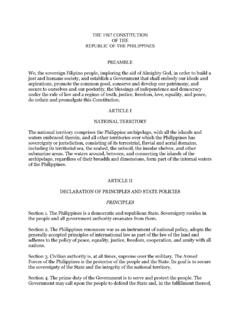
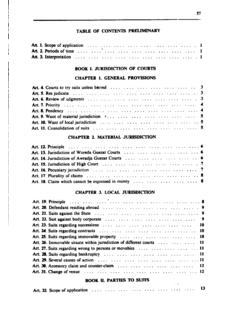
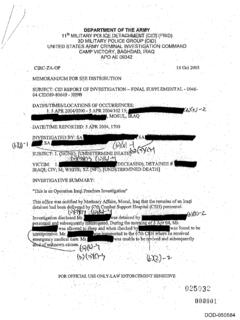
![Cap. 23] CHILDREN AND YOUNG PERSONS](/cache/preview/a/e/5/4/4/e/e/6/thumb-ae544ee647db019dff09ed2c401367af.jpg)

